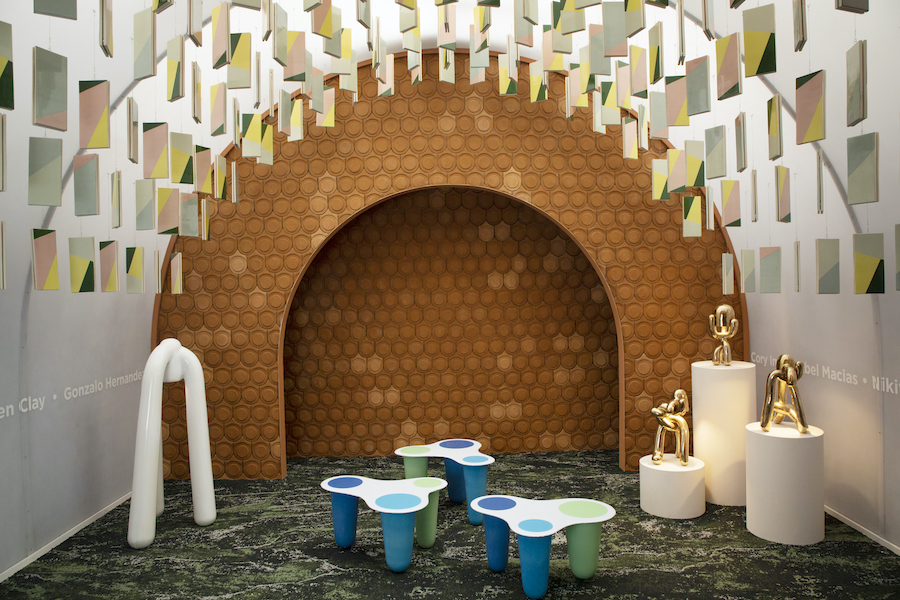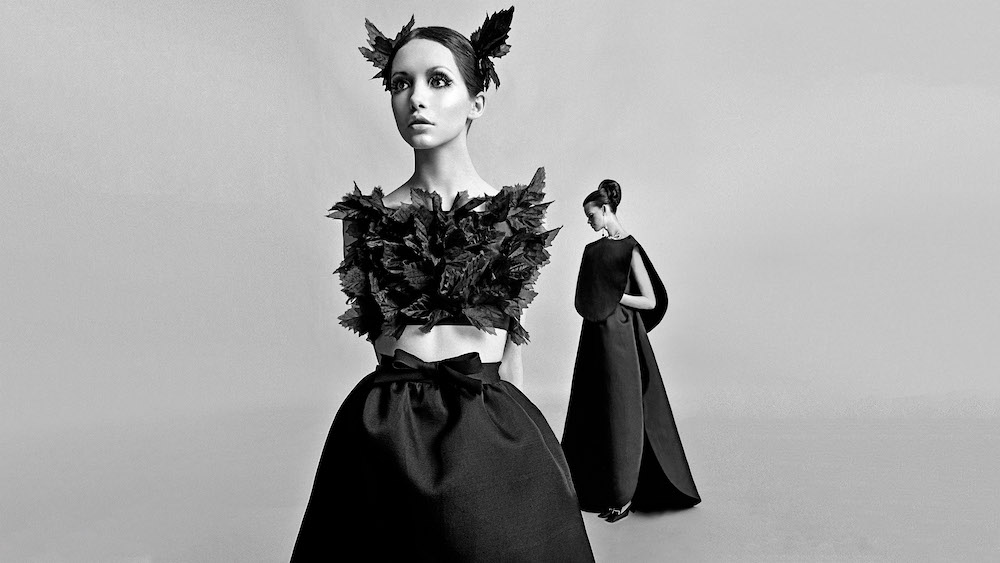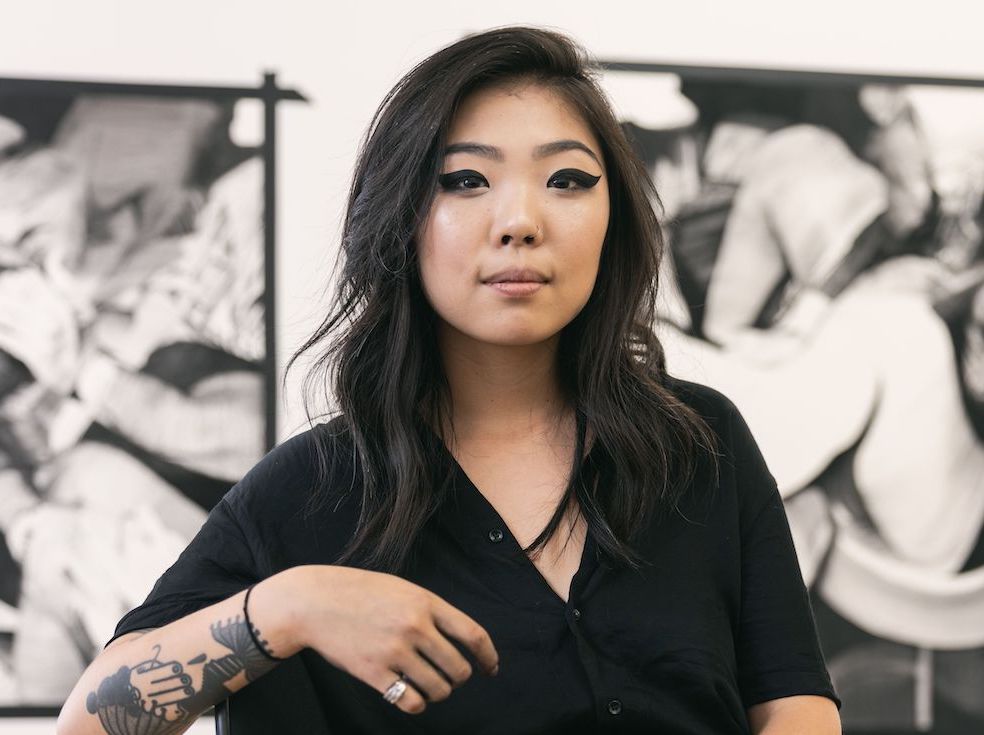On October 3, we traveled down to Savannah, Georgia for the opening of a very significant exhibition. At the Savannah College of Art and Design (SCAD), between the mossy trees and creative spirit, the SCAD Museum of Art (SCAD MOA) debuted “Frederick Douglass: Embers of Freedom”—a group exhibition dedicated to the profound life and legacy of African American abolitionist Frederick Douglass. On display in the museum’s Walter O. Evans Center for African American Studies are manuscripts, photographs, and letters from the Douglass’ family archive that reside in the collection of Dr. Walter and Linda Evans.
Joining the historic documents are modern and contemporary works, along with new commissions, by an array of emerging and established artists: Raphaël Barontini, Kevin Beasley, Onyedika Chuke, Scott Covert, Omar Victor Diop, TR Ericsson, LaToya Ruby Frazier, Lyle Ashton Harris, Stephen Hayes, Lubaina Himid, Glyneisha Johnson, Titus Kaphar, Jacob Lawrence, Le’Andra LeSeur, Meleko Mokgosi, Martha Rosler, Betye Saar, James Van Der Zee, Barbara Walker, Gillian Wearing, Charles White, Charles Edward Williams, and Wilmer Wilson IV. The exhibition is anchored by two parallel solo exhibitions—a public art commission entitled “The Golden March” by Paris-based artist Raphaël Barontini and a three-channel video installation entitled “Lessons of the Hour” by world-renown artist Isaac Julien.
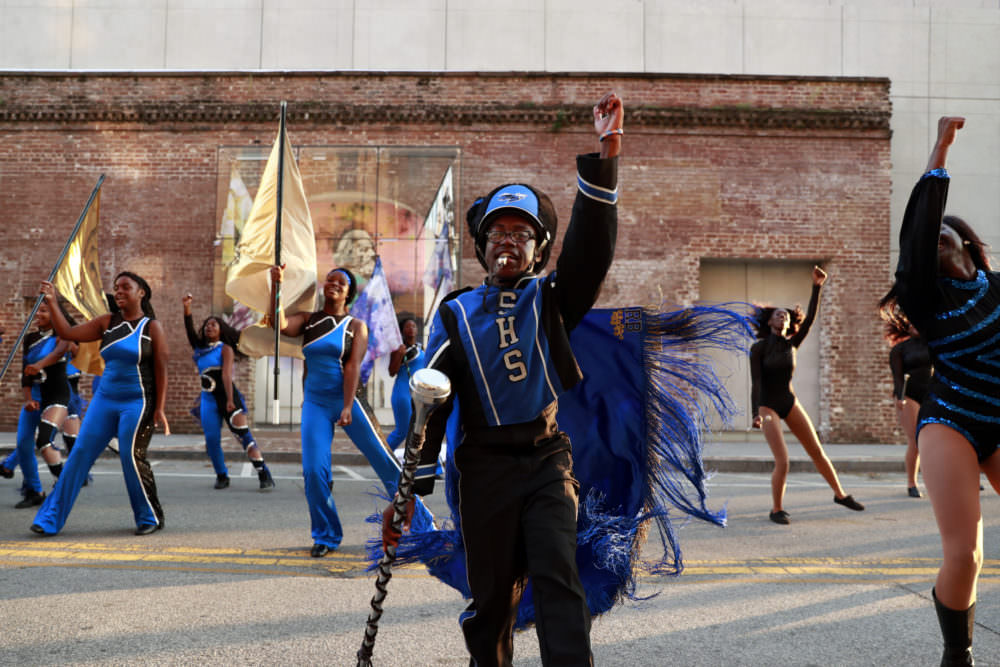 Raphaël Barontini’s “The Golden March.”
Raphaël Barontini’s “The Golden March.”Performance with the Savannah High School Marching Band.
Courtesy of SCAD.
On the day of the opening, we joined some of the artists for an open-format discussion, heard from Dr. Walter Evans on his profound collection, and enjoyed an informative keynote lecture by David W. Blight—the 2019 Pulitzer Prize-winning author for his book Frederick Douglass: Prophet of Freedom. After Blight’s closing remarks, we were delightfully rattled by the sounds of the Savannah High School Blue Jacket Band, who overtook the stage and led us outside for a performance.
As the marching band performed in a second line parade fashion, we followed them down the street. On the exterior of the building, the museum’s large glass jewel boxes were covered by tapestries that eluded to Douglass’ fate—one read “The Escape for Freedom.” As the band passed by, the conductor paused to march over to each tapestry, cut down its ties, and allow for the art to be seen from behind the glass jewel box. This was the premise of Barontini’s “The Golden March,” and it was a joy to see special attendee Nettie Washington Douglass—Frederick Douglass’ great great granddaughter, and granddaughter of Booker T. Washington—standing beneath.
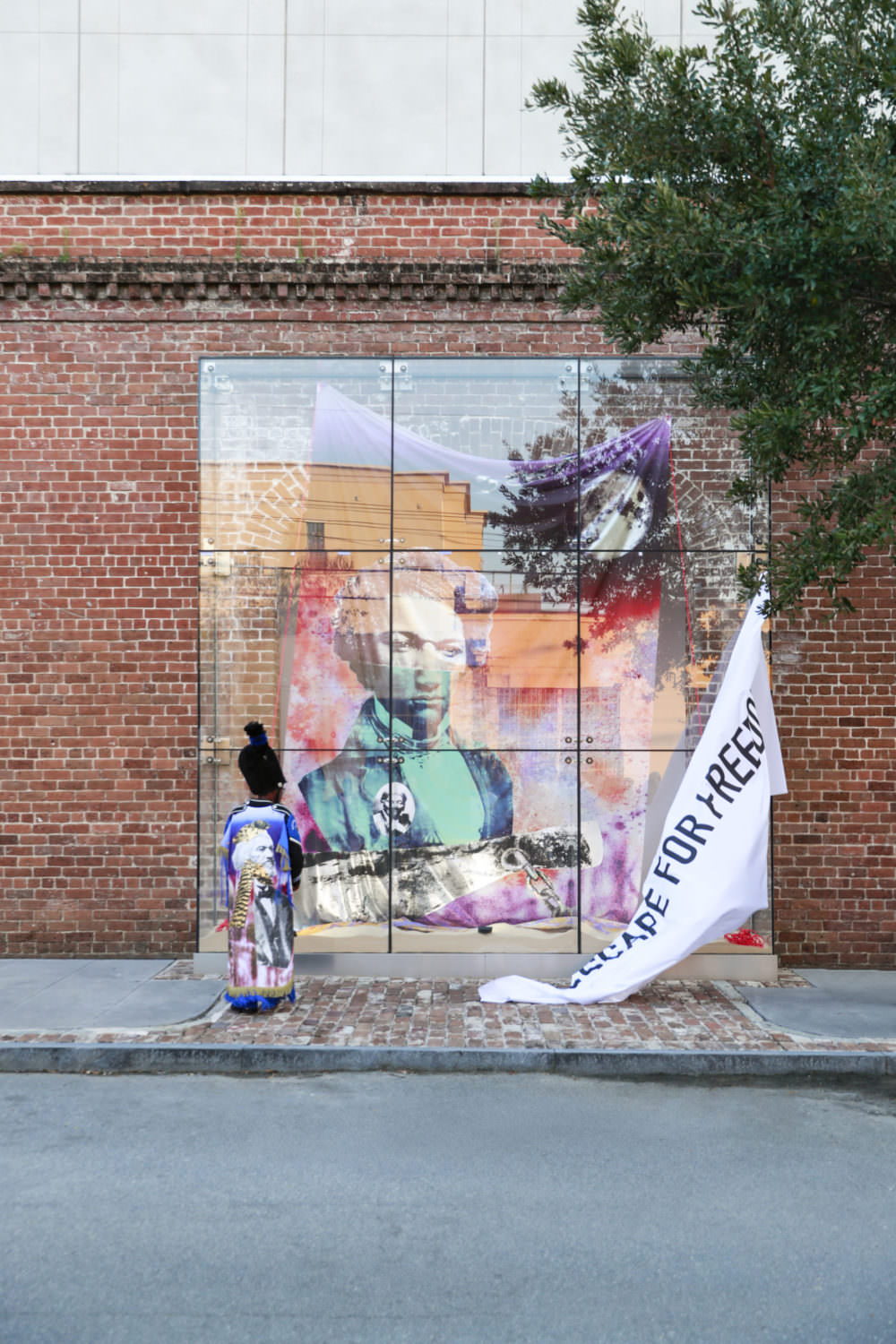 Raphaël Barontini’s “The Golden March.”
Raphaël Barontini’s “The Golden March.”Performance with the Savannah High School Marching Band.
Courtesy of SCAD.
For the occasion, Whitewall spoke with Humberto Moro, Curator at SCAD Museum of Art, and two of the artists—Charles Edward Williams (a 2006 SCAD BFA graduate) and Onyedika Chuke—about the exhibition’s importance and their works.
WHITEWALL: Tell us a bit about why SCAD is presenting an exhibition about Frederick Douglass today.
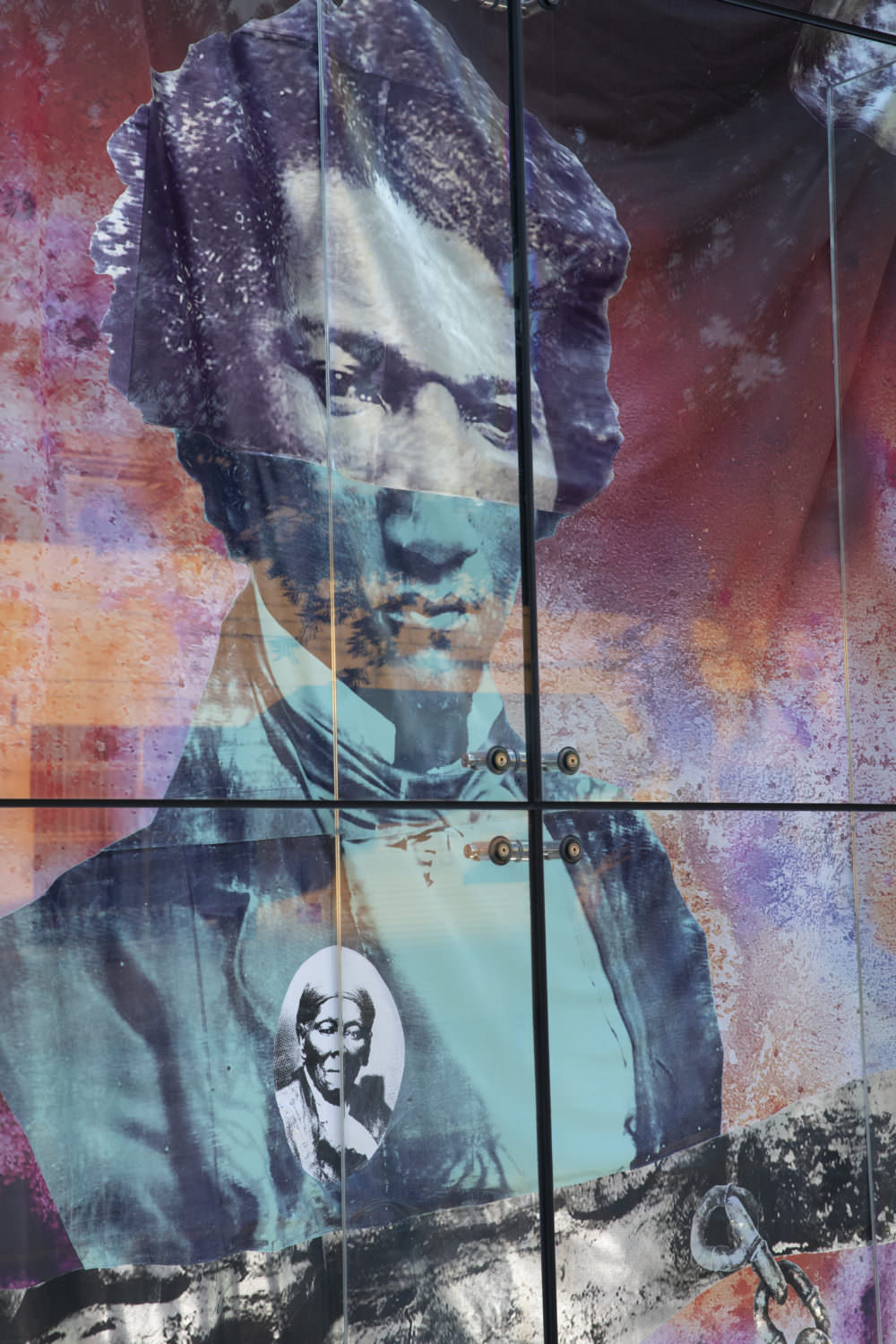 Raphaël Barontini’s “The Golden March.”
Raphaël Barontini’s “The Golden March.”Performance with the Savannah High School Marching Band.
Courtesy of SCAD.
HUMBERTO MORO: This exhibition celebrates the life and legacy of one of the greatest American figures: Frederick Douglass. Born two hundred years ago into slavery, Douglass became against all odds, one of the most important defenders of human rights, as well as a key figure of the anti-slavery movement. In 2018, we celebrated the bicentennial of Douglass’ birth and that propelled us to evaluate the differences and similarities between Douglass’ time and ours.
Specifically, to think about the power of speech, and the values at the core of the Douglass family’s struggle for freedom. Since the SCAD MOA opened in 2011 and under the guidance of SCAD president and founder Paula Wallace we have had the opportunity to provide audiences exposure to established and emerging African American artists and their outstanding artistic practices. This fall marked the perfect time to contextualize many of these practices in relation to one of the most important figures in American history.
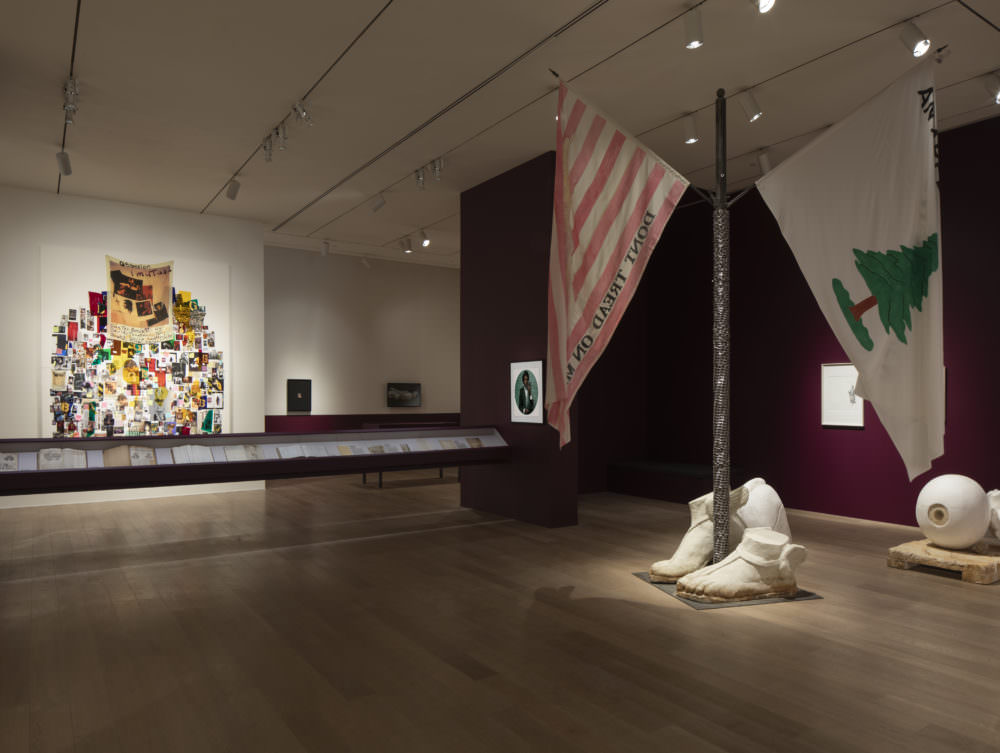 “Frederick Douglass: Embers of Freedom.”
“Frederick Douglass: Embers of Freedom.”Flags and sculptures by Onyedika Chuke.
Courtesy of SCAD.
The exhibition presents three bodies of work: outstanding archival materials from the Walter and Linda Evans collection, modern works part of the SCAD Museum of Art permanent collection, and special commissions with contemporary artists which have created works in response to the archival material.
WW: Why is this exhibition an important show to have today?
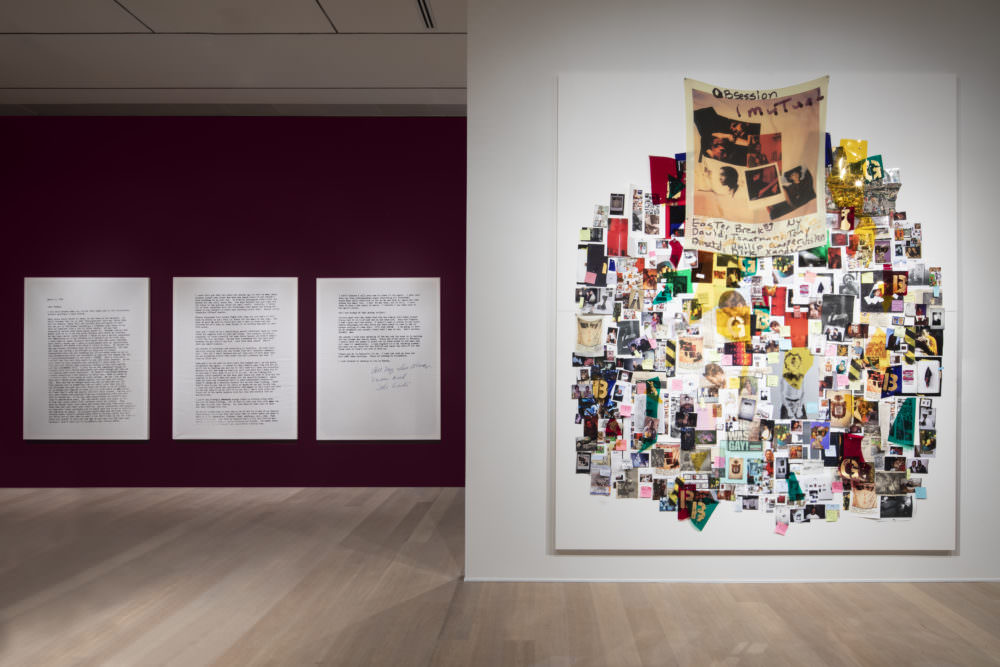 “Frederick Douglass: Embers of Freedom.”
“Frederick Douglass: Embers of Freedom.”Courtesy of SCAD.
HM: “Embers of Freedom” portrays Douglass not only as a national hero, also as a man of family, a champion of women’s suffrage, and a pioneering intellectual on photography, self-image, and representation—Douglass was thinking about the importance of photography almost 70 years earlier than Walter Benjamin.
The historic register of the Douglass family is displayed in dialogue with artworks by contemporary artists whose work reflects the aesthetic and political values promoted by this revolutionary leader. With this curatorial exercise, we are opening up the documents for new conversations as well as tracing the resonances of Douglass magnificent work as a writer and orator with a younger generation of artists. Due to preservation directives, this will be the last time these documents will ever be exhibited in such a comprehensive way; therefore, this exhibition becomes even more relevant. This exhibition is a celebration of his life, the life of the people around him, and a celebration of African American culture at large.
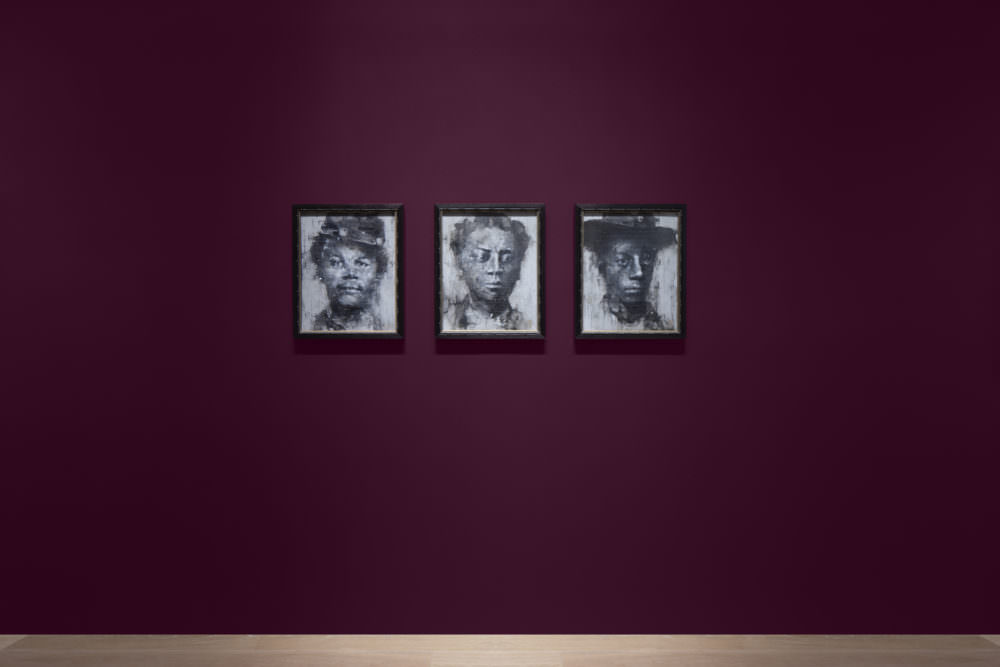 “Frederick Douglass: Embers of Freedom.”
“Frederick Douglass: Embers of Freedom.”“Sons of a Preacher Man” by Charles Edward Williams.
Courtesy of SCAD.
WW: Tell us a bit about working with Dr. Evans, and what is included from his collection in the show.
HM: All the archival material is part of the Walter and Linda Evans collection. Dr. Evans is a patron of the museum, a collector extraordinaire, and his passion for collecting and preserving incredible objects related to African American culture and history, is what has permitted this project to exist. Dr. Evans has been researching and collecting these materials for decades and he now has the largest private holding of Douglass documents in the world. In that sense, the extraordinary collecting practice of the Evans has been our first curatorial directive while creating this project.
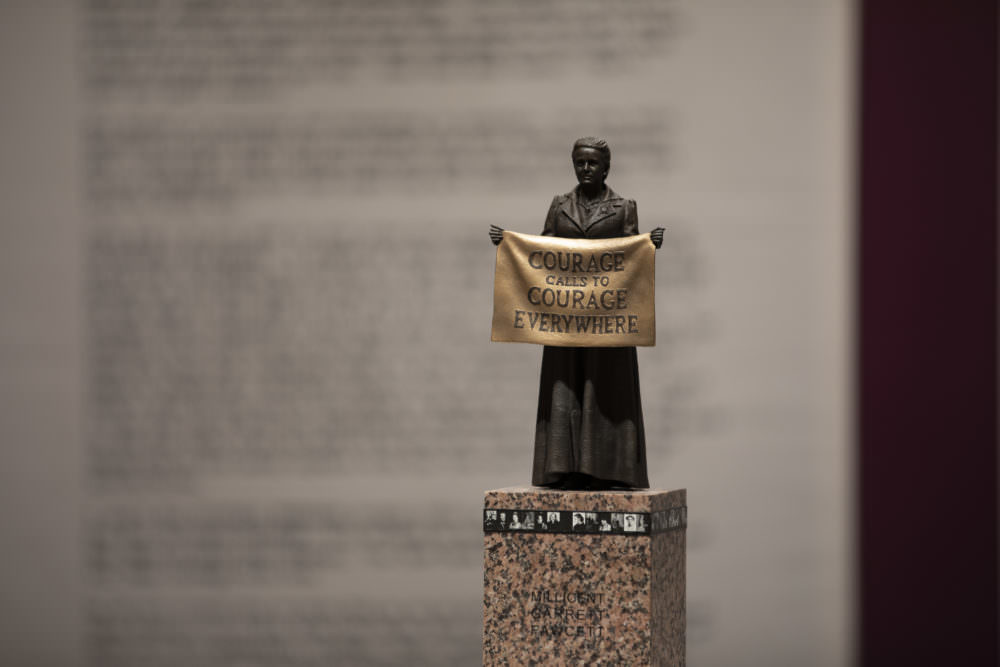 “Frederick Douglass: Embers of Freedom.”
“Frederick Douglass: Embers of Freedom.”Courtesy of SCAD.
We are presenting an extraordinary group of documents which include manuscripts, letters, newspaper clippings and photographs, and a series of scrap books that document the later, more public part of Douglass’ life—a time that was obscure until academics discovered the documents in the Evans’ collection. To work with this material is such a privilege which reminds our SCAD students and the community at large that history should be a more integral part of our daily lives, and we should be able to integrate the legacy and knowledge of our ancestors as a way to enrich our present. Again, this will be the last time that the public will be able to view the collection in such a comprehensive and immersive way.
WW: Tell us a bit about why the art included in the show was decided upon.
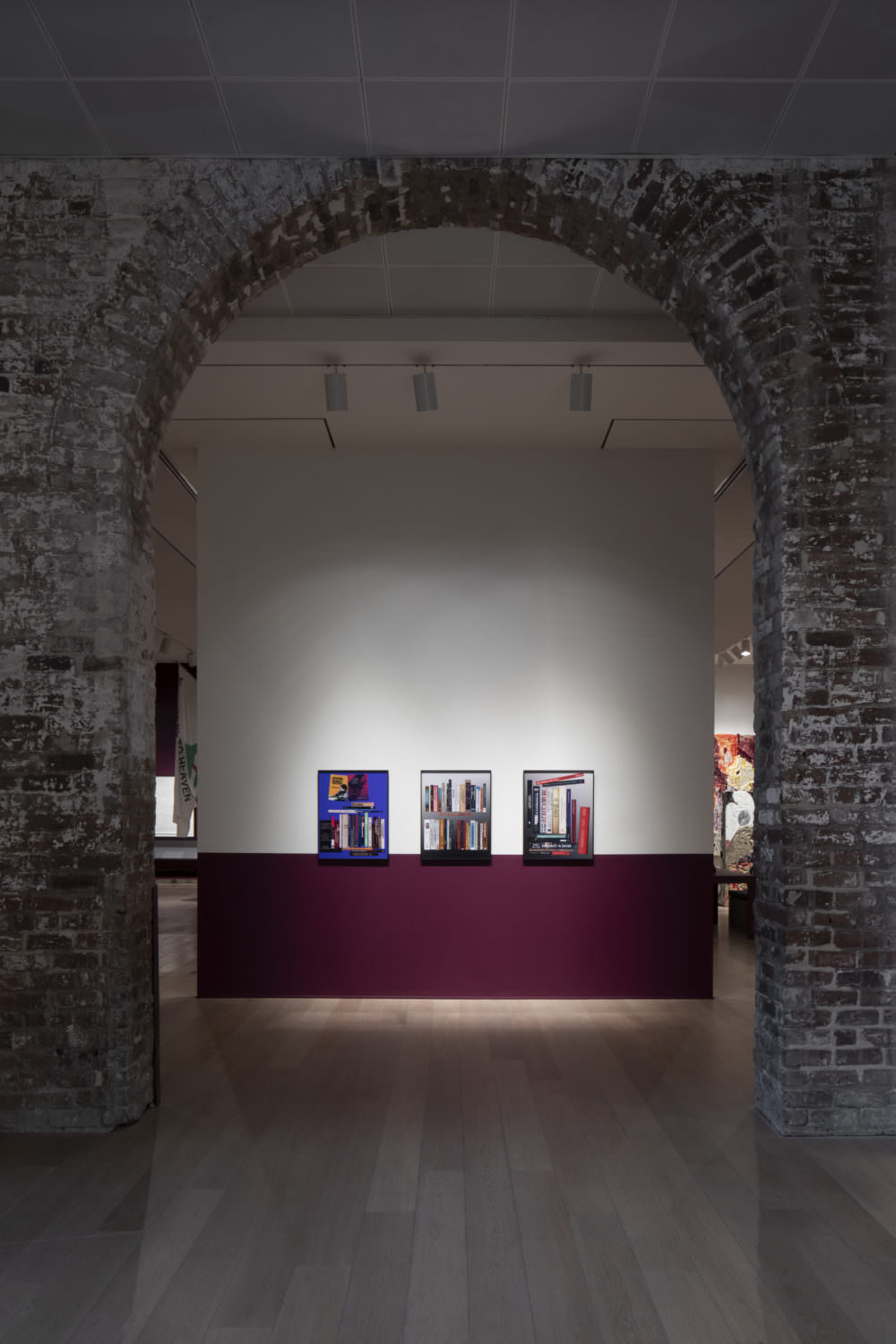 “Frederick Douglass: Embers of Freedom.”
“Frederick Douglass: Embers of Freedom.”Courtesy of SCAD.
HM: This is an exhibition that has been in the making for a couple of years, and it has been a slow, deep research process. It is curated by Celeste-Marie Bernier, perhaps one of the most important academic authorities in the world about Douglass, and locally lead by our SCAD MOA team: Ariella Wolens, assistant curator; Ben Tollefson, assistant curator; Storm Janse van Rensburg, former head curator; and me.
It has been a very open conversation in which we have analyzed the work of many artists which address primarily the consequences of slavery, integrate questions about archival practices, or speak directly about family bonds in their works. This research, paired with our ongoing mission to provide SCAD students a wide range of practices that will guide them to explore and prepare for their own creative careers, and simultaneously showcase important conversations for our community through art, is how the curation process took place.
WW: Charles, tell us a bit about your works for the show, the “Sons of a Preacher Man” series.
CHARLES EDWARD WILLIAMS: “Sons of a Preacher Man” are three painted portraits of the sons of Frederick Douglass, displayed as large daguerreotypes. The paintings show the interpersonal relationships between the father and his sons as well as speak to the deeper dynamic between the spiritual presence and physical absence of Frederick Douglass.
WW: Why did you choose these to show?
CEW: Douglass was a minister and an activist; two sometimes differing perspectives are both revealed in written letters to each of his sons. The content of these letters has been lasered onto the glass covering each framed portrait. The words convey messages of freedom, truth, and understanding. Ultimately, these ideas were passed on to his sons and influenced many others who eventually came into contact with the legacy of his writings.
As a son of a preacher myself, I’m incredibly familiar with the term and concept of Christian theology’s “Holy Trinity” and its reference to the father, son, and Holy Spirit. This tautology led me to create these portraits of the three sons of Douglass—Lewis, Charles, and Frederick Douglass, Jr.
WW: What type of significance from this exhibition do you most resonate with?
CEW: For me, “Frederick Douglass: Embers of Freedom” is significant because it is a collection that reflects the legacy of what Douglass predicted America could be. It is a monumental statement of expression and spirit; this exhibition is an opportunity for linked creatives to embody the ideals of Freedom of Speech and reveal their thoughts in his or her own way.
WW: Onyedika, can you tell us a bit about your sculpture works that you’re presenting?
ONYEDIKA CHUKE: As an archivist and sculptor, my work is greatly dependent on the analysis and dissemination of historic registers. For the past eight years, my practice has led me to partner my archive, entitled “The Forever Museum Archive” (2011-ongoing) with the holdings of The American Academy in Rome, the New York City Department of Corrections at Rikers Island, and now, the Frederick Douglass Family Archive of the Walter and Linda Evans Collection.
Engaging with these invaluable Douglass materials provided me the opportunity to draw greater connections between my own inquiry into the innate rights of the human beings and our relationship to state power. For “Embers of Freedom,” I utilized the Douglass archive to draw connections between the Transatlantic Slave Trade (1619-1865) and current trends of international human organ harvesting, which supports a sizable percentage of transplants in hospitals within the United States and has previously been sanctioned by European governments.
“Frederick Douglass: Embers of Freedom” is on view at SCAD MOA through January 5, 2020.








